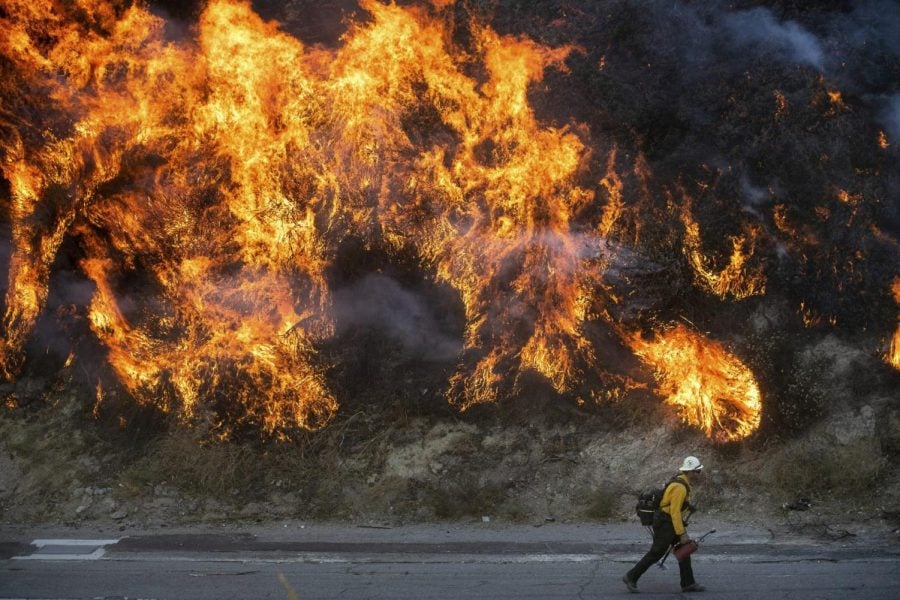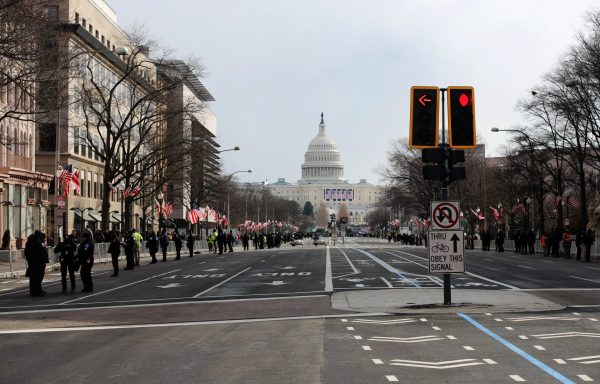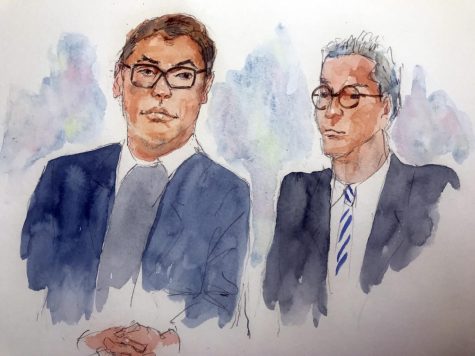California power shutoffs prevent wildfires, frustrate residents
Credit: AP Photo
Flames from a backfire, lit by firefighters to stop the Saddleridge Fire from spreading, burn a hillside in Newhall, Calif., on Friday, Oct. 11, 2019.
As San Francisco-based Pacific Gas & Electric Co. shut off power to over 800,000 customers in 34 California counties two weeks ago, residents and the state’s own governor expressed frustration with the power company. Were blackouts truly necessary to stop potential wildfires amid windy, arid conditions in Northern and parts of Southern California?
This wasn’t the first controversy for PG&E. The energy company provides power for more than 5 million households and has an aging above-ground infrastructure that resulted in them paying over $30 billion in fire wildfire liabilities last year. PG&E filed for bankruptcy protection in January amid allegations of responsibility for fires in 2017 and 2018, which was the state’s “deadliest and most destructive” year for wildfires, according to the California Department of Forestry and Fire Protection. The Mendocino Complex Fire, which broke out on July 27, 2018, became the largest fire in state history after burning through 459,123 acres.
“It was tough to be back here and only being able to text or call my family and friends and make sure they’re all good,” said Jill Wyman, a DePaul senior from Southern California. “Fires are unfortunately pretty common and the past few years they’ve hit pretty close to home. It’s also hard to see the videos and pictures on social media and not be able to do anything.”
PG&E’s own faulty power lines were found to be the source of the November 2018 Camp Fire that razed the Northern California town of Paradise to the ground; it was the single worst wildfire in the state’s history, killing 85 people, burning over 150,000 acres of land and causing over $16 billion in damages. 8.8 million acres of land were burned in 2018, after 10 million acres were burned in 2017.
According to the Insurance Information Institute, California has over 2 million properties at risk from extreme wildfires, followed by Texas with over 700,000.
The largest fire currently burning in California is the 8,391-acre Saddle Ridge Fire, which started in Sylmar, Los Angeles. As of Sunday, 80 percent of the blaze was contained; thousands saw their power cut by Southern California Edison, whose own transmission tower was reportedly the origin of the blaze.
FEMA Region 9, which includes California, Nevada, Arizona, Hawaii and the Pacific Islands, tweeted Wednesday, Oct. 9 that, “Extended power outages may be the new normal in California.”
According to Christie Klimas, an associate professor of environmental science and studies at DePaul, rising temperatures in California have led to drier forests, making them more susceptible to fire.
“Some of the ecosystems in California are fire-dependent,” she said. “And so the lack of fire, because people don’t like having even small intensity fires burn close to their houses, means that there’s been a buildup of flammable, dry biomass in some of these areas, which makes them more likely to burn now than they would if they burned every couple years.”
Klimas also pointed to warming temperatures pulling more moisture from the soil, which can lead to increased moisture in the air as well as more droughts — an issue seriously affecting California.
All these factors, exacerbated by climate change and combined with a dry, windy weather pattern led PG&E to announce Monday, Oct. 7 that they were considering shutting off power for 800,000 customers. Joseph Schwieterman, a professor in DePaul’s School of Public Service, said the company had to balance its duty to provide power for customers with the potential that its own lines might contribute to deadly forest fires.
“Energy companies, public utilities supplying energy, are regulated monopolies that are expected to act in the public interest,” Schwieterman said. “That gives them a higher level of responsibility than most other corporations. With climate change, it’s created a whole new dilemma: whether to compromise customer service for the sake of preventing wildfires. There’s no easy answer to that since we don’t have clear metrics on the tradeoffs. The companies are really between a rock and a hard place.”
In PG&E’s case, it chose to shut down customers’ power.
On Tuesday, Oct. 8, PG&E announced that power outages would take place the next day. PG&E’s communications and computer systems crashed that night, as did its website while customers checked on the status of their power. Outages began for many without warning that Wednesday morning, leaving nursing homes and other emergency services searching for alternative power. Most power was back up Friday morning, but 12,000 residents were still powerless on Saturday.
Many low-income residents felt the sudden loss of power as well, with no ability to afford a backup power plan. For those with sleep apnea in need of a CPAP machine, it was a particularly difficult period, as the shutoff put their lives in danger during sleep. Residents reported difficulty tracking down their needed medication in the dark and food storage was difficult without refrigeration.
“In California, the company simply wasn’t equipped to fully assess all the tradeoffs,” Schwieterman said. “You know, we talk about medical issues and first-aid and so forth. And I can’t think of another area where private companies were forced to choose between two equally bad options.”
California Governor Gavin Newsom has demanded PG&E pay affected customers a $100 rebate. Customers expressed frustration with PG&E’s communication strategy, and Bill Johnson, the company’s chief executive, pledged improved communications with residents in the future.
“Californians should not pay the price for decades of PG&E’s greed and neglect,” Newsom said in a statement Monday, Oct. 14. “PG&E’s mismanagement of the power shutoffs experienced last week was unacceptable. We will continue to hold PG&E accountable to make radical changes — prioritizing the safety of Californians and modernizing its equipment.”
Schwieterman criticized PG&E for failing to anticipate the issues that arose. He suggested they could have briefly shut off the power so fire equipment could have been dispatched to other areas. From a legal standpoint, the energy company also could have worked with the courts to pass measures to help shield them from blame.
Wyman, the DePaul student from Southern California, also believes PG&E has a duty to protect public safety. “They have a responsibility to ensure the safety of the residents they serve,” she said. “California being insanely dry most of the time makes it susceptible to fires and an electricity company should be up-to-date to keep everyone safe.”
Klimas, the DePaul environmental studies professor, said she wasn’t sure if PG&E’s decision to shut off power was “the most effective solution.”
“That’s a hard question, that’s a loaded question,” she said. “I think it’s a reasonable way to prevent what could potentially be a great amount of damage.”







